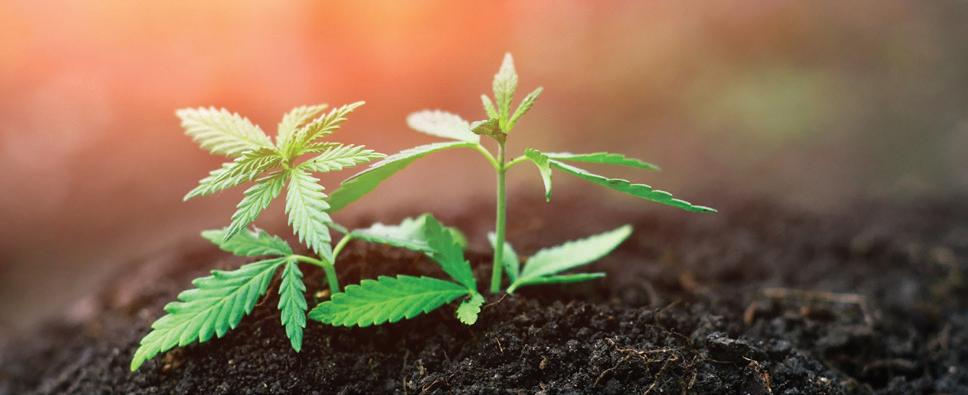
3 minute read
CULTIVATION
BY RACHAEL CARLEVALE THE SOUL OF THE SOIL
A single teaspoon of soil can hold up to one billion bacteria, several yards of fungal filaments, several thousand protozoa, and thousands of nematodes, the essential factor separating soil from dirt— Life! To build living soil for your garden, use high quality organic ingredients from sustainable sources to create a stable ecosystem that will model nature’s rhythms. The soil food web powers the growth of the plants by making nutrients available and creates a regenerative closed loop system. Natural soil systems allow for the organic cycling of nutrients from the diversity of microbes present. Once you have created a living organic soil, you, in essence, can just plant a seed and water it. Plants have and do grow all the time without the use of pesticides, herbicides, fungicides, and chemicals to motivate pH levels. It happens in nature everyday. When humans interrupt these natural systems, like trying to bypass the soil food web for example, it can lead to a dependance on varying methods of agriculture based in synthetic models known to harm the environment and, potentially, the plant and end user. One solution is to observe natural patterns and model them (both indoors and out). When seeds fall, they are covered with a mulch. The soil receives a protective layer of dried leaves to create an inhabitable environment for the life beneath our feet to thrive. We mock this particular autumn seasonal flow in our gardens by including cover crops, top dressing with compost, and mulching. There are many examples of soil building and methods to farming that one may explore.
Advertisement
1 PART SPHAGNUM PEAT MOSS: A natural, organic resource from bog ecosystems that is predominantly harvested for water retaining properties, and it is naturally pathogen free. Peat moss improves soil structure, drainage, and retains nutrients. 1 PART COMPOST: Decomposing organic matter; it can be made of up to 50% earthworm castings. Depending on your needs, making a worm bin at home may interest you to ensure product quality. Whatever the animal eats, the compost will become, so be sure to check the source. 1 PART AERATION: Pumice stones, volcanic rock, and/or rice hulls (that have a low germination rate) are added to create aeration. In a no-till system, these natural spaces serve to allow water and nutrients to flow, and are also home for microbes. Worms are another example of aeration. As they move through the soil, their bioslime binds soil particles together, which, in turn, allows for water retention!
AMENDMENTS: per cubic foot of total soil volume, consider adding ½ cup of each: Kelp Meal: Known to enrich the soil. Alfalfa Meal: Natural fertilizer Crustacean Meal: High in calcium carbonate, crab and shrimp combined. The shells are made of chitin and break down into chitenaise. It contains nitrogen and phosphorous. NeemCake: High azardaractin count, natural fertilizer. Karanja Cake: Organic fertilizer, high in nitrogen, phosphorus and potassium.

If the aspect of building soil from scratch feels overwhelming, there are companies who offer pre-mixed living soil for your convenience. Tracking all of your inputs and following a grow cycle that supports a living system will create the best case scenario for your gardening success. No-till container gardening is a simple solution to both indoor and outdoor farms with the end goal of closing loops, so we can best preserve the earth and create harmonious systems which produce safe and clean plants.









